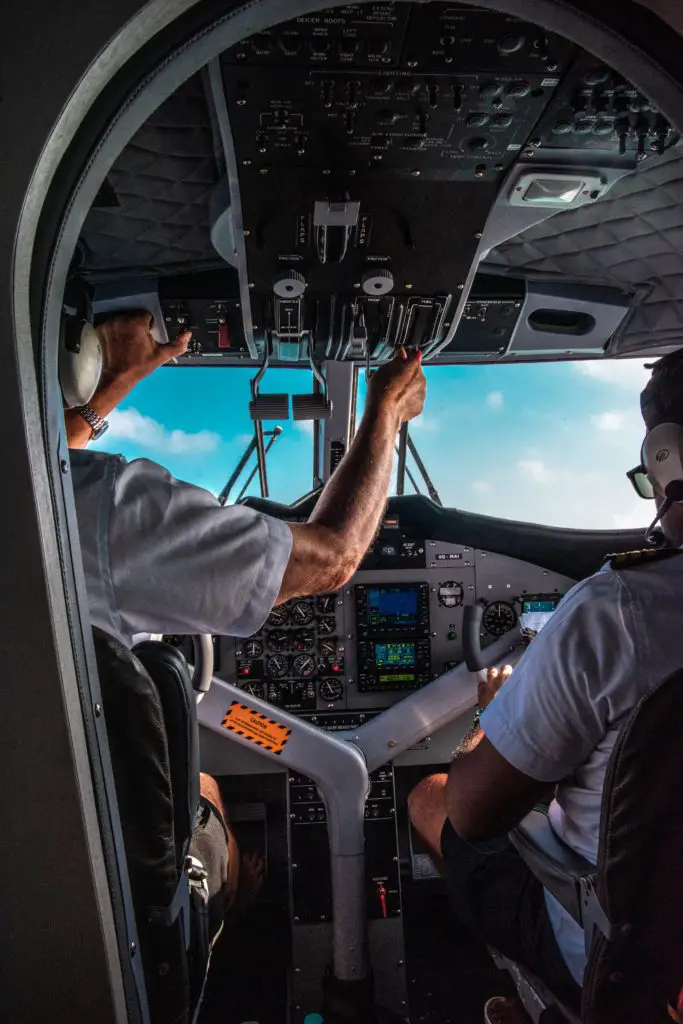Before answering this question, let us understand the meaning of these two terms. A student pilot is a person who is still training under a certified flight instructor and can fly the plane under restricted conditions as permitted by the instructor. Weather minimums are the threshold of weather conditions required for flying the aircraft, in other words, they are the worst weather conditions unfavorable for normal flying. In this case, the plane is operated either by Visual Flight Rules (VFR) – in case, visibility is there for the pilot, or Instrumented Flight Rules (IFR) – in case, the pilot can’t see the route due to bad weather conditions. Here we will see about What are the weather minimums for a student pilot?

The airspace is divided into 4 categories namely controlled, uncontrolled, special use & other. The controlled airspace (controlled by tower and officials sitting at the ground level to give instructions in case of emergency, known as ATC) is further subdivided into different classes A, B, C, D, E, and G. The purpose behind making these classes is to avoid hitting of the planes with each other in the sky. Class A and E are at the highest distance from the ground or sea level. Then, comes the B, C, D, and G in the decreasing order of their height from the mean sea level. But, a student pilot is generally not allowed to fly in the B class airspace or above that because flying at higher altitudes requires a whole lot of experience. The weather minimums for him/her are as follows: –
- Under Controlled airspace (C & D) – the height should be below 10000 feet from the mean sea level, visibility of 3 miles, and cloud distance from the aircraft should be “152” which means 1000 ft above, 500 ft. below, and 2000 ft horizontally.
- In Uncontrolled airspace (G) – the plane should be at a height of or less than 1200 AGL (above ground level), 1 mile of visibility during daylight, and cloud distance of “152” as explained in the above point.
What are the different types of pilot certificates a student can apply for?
There are 3 different types of certificates a student pilot can get: –
- Private Pilot License – At least 40 hours of flight training is required to get a certificate in this category. You can go on solo flights after the certificate and endorsement from your instructor.
- Recreational Pilot – It is more relaxed in terms of the flying hours as 30 hours of flight training is required in it.
- Sports Pilot – It is the easiest one to get in terms of cost and time. It is the least costly and only 20 hours of flight training is sufficient to apply for it. One of the major facts to note here is that a sports pilot can fly only light-weight aircraft, having only 2 seats as compared to the above categories.
What is the procedure to get a certificate as a student pilot?
- Either go to the website of IACRA ( Integrated Airman Certification & Rating Application) and fill out the online application or get a hardcopy of Form 8710-1 issued by FAA (Federal Aviation Administration). Submit it to a Flight Standards District Office (FSDO) or a certified flight instructor.
- Provide documents along with the application, as required and mentioned in the form. Usually, an Identification Card with a photo of the applicant and his signature is required.
- The district office (FSDO) will forward your application to a branch of airmen certification. Once accepted from there, the branch will provide you with the desired certificate by mail.
Conclusion –
There are some restrictions on a student pilot for flying an aircraft. There must be an instructor present with them during their flight. For solo flight, they need to produce the certificate, and logbooks having the endorsements by the instructor mentioning that the student is capable of flying solo. They can’t fly above the height of 10000 feet from the mean sea level. They can’t carry passengers with them during the flight training. But, for reaching the top of the success ladder, you first have to climb the smaller steps. Although it is morally right to not put restrictions during training as aviation is a risky venture and you can’t put the responsibility of hundreds of passengers in the hands of a naive.
Frequently Asked Questions: –
Q1. Is there any age limit in applying for the student pilot certificate?
Yes, the applicant should be at least 16 years but, in the case of flying gliders and balloons, the applicant having 14 years of age can apply.
Q2. Should I have to pay any fees for getting the certificate?
Yes, it is free as it is issued by the government authority, FAA. The only charge you have to pay is for the medical test conducted by the medical examiner of the training school.
Q3. What is the duration of the validity of the certificate?
Before 2016, it was valid for 24 months from the date of the issue but, after 2016, it comes with lifelong validity.

